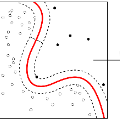Anomaly detection algorithms are often thought to be limited because they don't facilitate the process of validating results performed by domain experts. In Contrast, deep learning algorithms for anomaly detection, such as autoencoders, point out the outliers, saving experts the time-consuming task of examining normal cases in order to find anomalies. Most outlier detection algorithms output a score for each instance in the database. The top-k most intense outliers are returned to the user for further inspection; however the manual validation of results becomes challenging without additional clues. An explanation of why an instance is anomalous enables the experts to focus their investigation on most important anomalies and may increase their trust in the algorithm. Recently, a game theory-based framework known as SHapley Additive exPlanations (SHAP) has been shown to be effective in explaining various supervised learning models. In this research, we extend SHAP to explain anomalies detected by an autoencoder, an unsupervised model. The proposed method extracts and visually depicts both the features that most contributed to the anomaly and those that offset it. A preliminary experimental study using real world data demonstrates the usefulness of the proposed method in assisting the domain experts to understand the anomaly and filtering out the uninteresting anomalies, aiming at minimizing the false positive rate of detected anomalies.
翻译:异常检测算法通常被认为有限, 因为它们不为域专家验证结果的进程提供便利。 在 Contrast 中, 异常检测的深层次学习算法, 如自动解码器等, 指出导出器, 节省专家研究正常案例以发现异常现象的耗时任务。 多数异常检测算法在数据库中为每个案例得出一个分数。 最高级最强烈的外向器被送回用户作进一步检查; 但是, 人工验证结果会变得具有挑战性, 没有额外的线索。 解释为什么一个实例是异常的, 使专家能够集中调查最重要的异常现象, 并可能增加他们对算法的信任。 最近, 一个以游戏理论为基础的框架, 被称为 Shamapley Additive Explectations (SHAP), 被证明在解释各种受监督的学习模式方面是有效的。 在这项研究中, 我们扩展 SHAPP, 来解释由自动解码器( 一种不精确的模型) 所检测到的异常现象。 拟议的方法提取和直观描述出最有助于异常现象的特征, 和抵消这些异常现象的特征。 初步实验性研究研究利用真实性分析法, 以了解真实性能能 来了解真实性地分析结果,, 以了解真实性能, 显示真实性能的异常性 。




















